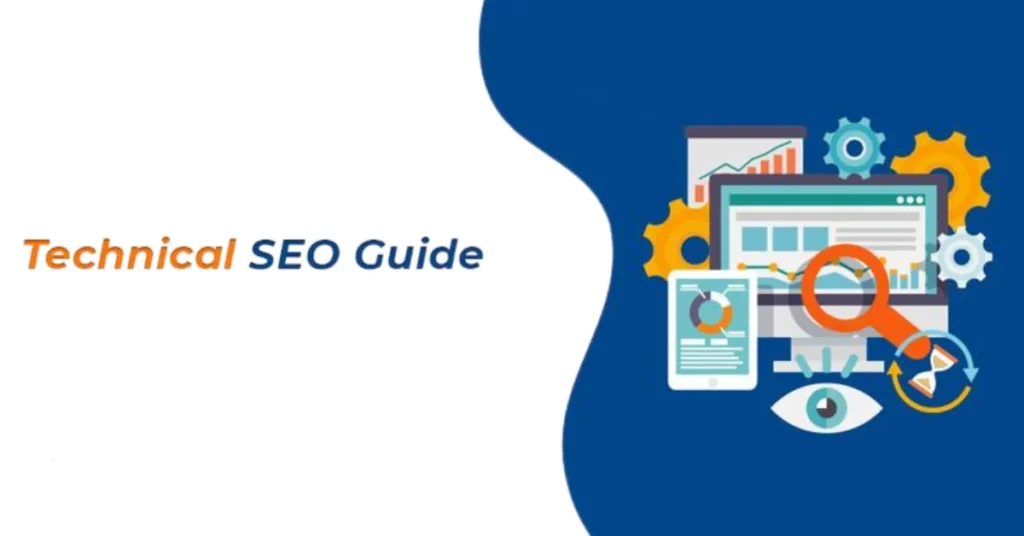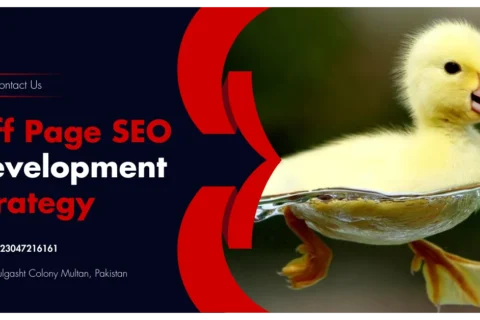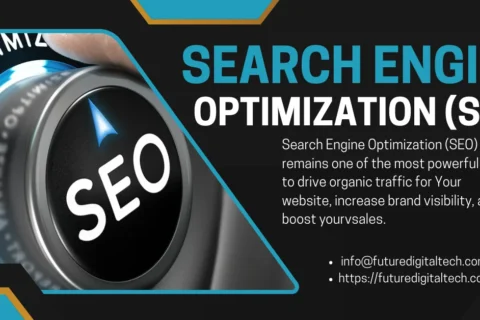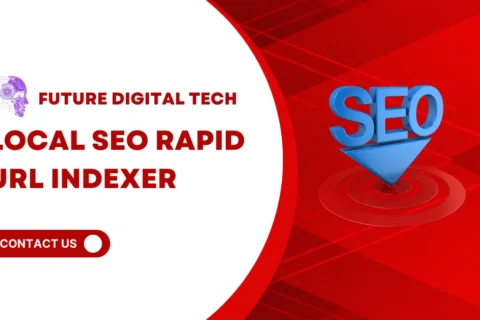Welcome To Future Digital Tech For Technical SEO
Create your own
Technical Seo Is The Backbone Of A Strong Digital Presence.
The Ultimate Guide to Technical SEO Checklist in 2025
Technical SEO Checklist is the backbone of a strong digital presence. No matter how amazing your content is, if your website has technical issues, it won’t rank well on Google. Now, we break down technical SEO in a simple yet comprehensive way—designed especially for businesses and content creators targeting audiences in the USA.
What is Technical SEO?
Technical SEO optimizes your website’s infrastructure so search engines can crawl, index, and rank it effectively. Unlike content SEO, which focuses on keywords and messaging, technical SEO ensures your website is fast, secure, and easily understandable by search engines like Google USA.
Why is Technical SEO Important in 2025?

- Improves crawlability and indexability
- Google bots must be able to access and understand your website structure. A technically sound site makes this easy, boosting your visibility.
- Direct impact on rankings
- Core Web Vitals, page speed, and one things is most important mobile friendliness — are all technical ranking factors in Google’s algorithm.
- Better user experience
- A technically optimized site loads faster works well on mobile and reduces bounce rates — crucial for USA-based users who expect instant performance.
Complete Technical SEO Checklist for 2025
Here’s a detailed breakdown of the most critical technical SEO components:
1. Site Speed Optimization
- Why it matters: Users in the USA expect sites to load in under 3 seconds. Slow-loading pages cause visitors to leave.
- How to improve:
- Compress images using tools like TinyPNG.
- Use lazy loading for images and videos.
- Minify CSS, HTML, and JavaScript.
- Choose a fast, US-based hosting provider.
2. Mobile-Friendly Design
- Why it matters: Over 60% of USA traffic comes from mobile devices.
- How to optimize:
- Use responsive design.
- Make buttons and text easy to click and read.
- Test your site with Google’s Mobile-Friendly Tool.
3. SSL and HTTPS
- Why it matters: HTTPS is a ranking factor and builds trust with USA audiences.
- How to check:
- Ensure your site uses HTTPS.
- Fix mixed content issues (non-secure elements on secure pages).
4. Fix Crawl Errors
- Why it matters: If search engines can’t crawl your site correctly, they can’t index or rank it.
- How to fix:
- Use Google Search Console ( GSC) to find and fix crawl errors.
- Submit updated sitemaps.
- Remove broken links or redirect them correctly.
5. Clean URL Structure
- Why it matters: Clear and readable URLs improve SEO and user trust.
- Best practices:
- Use hyphens, not underscores (e.g., example.com/technical-seo-guide).
- Keep URLs short and descriptive.
- Avoid dynamic parameters if possible.
6. XML Sitemap Optimization
- Why it matters: Sitemaps help Google discover your pages faster.
- Tips:
- Submit your sitemap in Google Search Console.
- Keep it updated automatically.
- Exclude noindex and irrelevant pages.
7. Robots.txt Configuration
- Why it matters: Prevents search engines from crawling unnecessary or sensitive pages.
- Tips:
- Check if important pages are being blocked.
- Don’t disallow necessary scripts or styles.
8. Structured Data (Schema Markup)
- Why it matters: It enhances how your content appears in search results and wealthy snippets.
- Tips:
- Use tools like Google’s Structured Data Markup Helper.
- Add schemas for products, FAQs, reviews, etc.
9. Core Web Vitals
- Why it matters: Google uses Core Web Vitals as a ranking signal.
- Metrics to optimize:
- Largest Contentful Paint (LCP) – LCP stand for Largest Contentful Paint computes load speed.
- First Input Delay (FID) – FID stand for First Input Delay measures interactivity.
- Cumulative Layout Shift (CLS) – CLS stand for Cumulative Layout measures visual stability.
10. Canonicalization
- Why it matters: Prevents duplicate content issues by signalling the preferred version of a page.
- Tips:
- Use canonical tags properly.
- Avoid duplicate content across multiple URLs.
Advanced Technical SEO Tips

- Use a CDN (Content Delivery Network): A CDN speeds up content delivery, which is especially helpful if you’re targeting users across different states in the US.
- Implement hreflang for multilingual pages: If you’re targeting both English and Spanish-speaking US audiences, hreflang helps direct the correct language to the right users.
- Log file analysis: Log file analysis helps you to understand how Googlebot crawls your website.
Common Technical SEO Issues (And How to Fix Them)
- Broken internal links – Use tools like Screaming Frog to find and fix them.
- Slow server response times – Upgrade hosting or reduce server load.
- Unoptimized images – Always compress images and use modern formats like WebP.
- Orphaned pages – any Pages not linked from anywhere on your site; link them internally its call Orphaned pages.
Essential SEO Techniques for 2025
Technical SEO for WordPress, eCommerce, and SaaS Websites
- WordPress: Use plugins like Rank Math or Yoast, keep themes and plugins updated, and use caching tools.
- eCommerce: Optimize product pages, use proper schema for product info, and handle faceted navigation carefully.
- SaaS: Focus on crawl budget, technical documentation indexing, and fast performance across landing pages.
How to Perform a Technical SEO Audit
- Crawl your site using Screaming Frog or Sitebulb.
- Check Google Search Console for crawl errors and performance data.
- Analyze site structure, internal linking, and duplicate content.
- Evaluate Core Web Vitals using PageSpeed Insights.
- Fix all high-priority issues first (e.g., broken links, HTTPS problems).
Final Thoughts
Technical SEO is not just for developers or SEO pros. It’s for anyone serious about ranking higher on Google and delivering a flawless user experience — especially in competitive markets like the USA.
Whether you’re a freelancer, agency, SaaS business, or eCommerce brand, implementing these technical SEO best practices can make or break your visibility online.
- Off Page SEO Checklist? What is it? Do It & Strategies That Work. 1. Discover efficient Off-page SEO strategies, as well as On page SEO such as backlink development and social media interaction to boost your site’s ranking on search engines.
- SEO: The Complete Guide for Beginners
- An extensive introduction to SEO with the key strategies to increase the visibility of your website for major search engines.
- The 3 Beauty Trends dominating London This Moment
- Discover the latest trends in fashion for beauty that are dominating the London fashion scene with a look into new fashions and products.
- Uber, Lyft and the challenges of startups in transportation profit
- An examination of the financial difficulties facing transportation startups such as Uber and Lyft to sustainably earn profits.
- What is What is Digital Marketing? Learn what digital marketing is, as well as its methods, channels and the benefits it brings to businesses that operate online in today’s highly competitive market.
Frequently Asked Question (FAQs)
What is the reason why technical SEO important to rank within America USA?
Answer:
Technical SEO makes sure your site meets Google’s quality standards. This is crucial to rank well in the highly competitive USA markets. A well-designed website enhances the indexing, user experience and speed. These are all essential SEO ranking factors that affect U.S. Google and other search engine.
How do I perform a technical SEO audit?
Answer:
Begin by using tools such as Semrush, Ahrefs, or Screaming Frog to crawl your website. Examine broken links duplicate content, meta tags that are missing and slow page loading speed issues with mobile devices and sitemap error. Repair the issues that are found for better technical SEO health.
What's the difference between technical SEO and on-page SEO?
Answer:
Technical SEO concentrates on the structure in addition to the overall performance of your site while on-page SEO concentrates on optimizing the meta tags, content and the use of keywords on specific web pages. Both are crucial to good search engine ranking.
What is the best time to conduct an SEO technical SEO Audits?
Answer:
It’s recommended that you conduct an SEO audit every 3 to 6 months, particularly if you have a huge or eCommerce site. Regular audits will allow you to identify issues earlier and help maintain a high search ranking within your U.S. Market.
Can I perform the technical SEO by myself or do I need to hire an expert?
Answer:
If you’re comfortable in SEO tools and possess some technical skills, you could start by learning the basics of SEO yourself. For large-scale or eCommerce sites it is recommended to employ an expert SEO expert or an agency in the USA to perform a more thorough optimization.
Local SEO Rapid URL Indexer
The Ultimate Guide to Growing Your Business Locally | Local SEO Rapid URL Indexer At…
April 24, 2025 0

Digital Marketing
Technical SEO Checklist
Welcome To Future Digital Tech For Technical SEO Create your own Technical Seo Is The…
April 16, 2025 0

Digital Marketing
Off Page SEO Checklist
A Complete Guide to Ranking Higher and Building Online Authority Off Page SEO checklist: In…
April 12, 2025 0

Digital Marketing
On Page SEO Checklist
What is On Page SEO? A Complete Beginner-Friendly Guide (With Checklist ) Do you want your…
April 5, 2025 0

Digital Marketing
Search Engine Optimization SEO: The Complete Guide for Beginners
🔍 What Is Search Engine Optimization? In the fast-paced world of digital marketing, Search Engine…
March 31, 2025 0

Digital Marketing
What Is Digital Marketing?
What Is Digital Marketing? In the digital age the way businesses interact with their customers…
Future Digital Tech
Future Digital Technology The Evolution of Technology in the Digital Age In our fast-paced society,…
March 16, 2025 0
Local SEO Rapid URL Indexer
April 24, 2025 0
Digital Marketing
Technical SEO Checklist
April 16, 2025 0
Digital Marketing
Off Page SEO Checklist
April 12, 2025 0
Digital Marketing
On Page SEO Checklist
April 5, 2025 0
Digital Marketing
Search Engine Optimization SEO: The Complete Guide for Beginners
March 31, 2025 0



